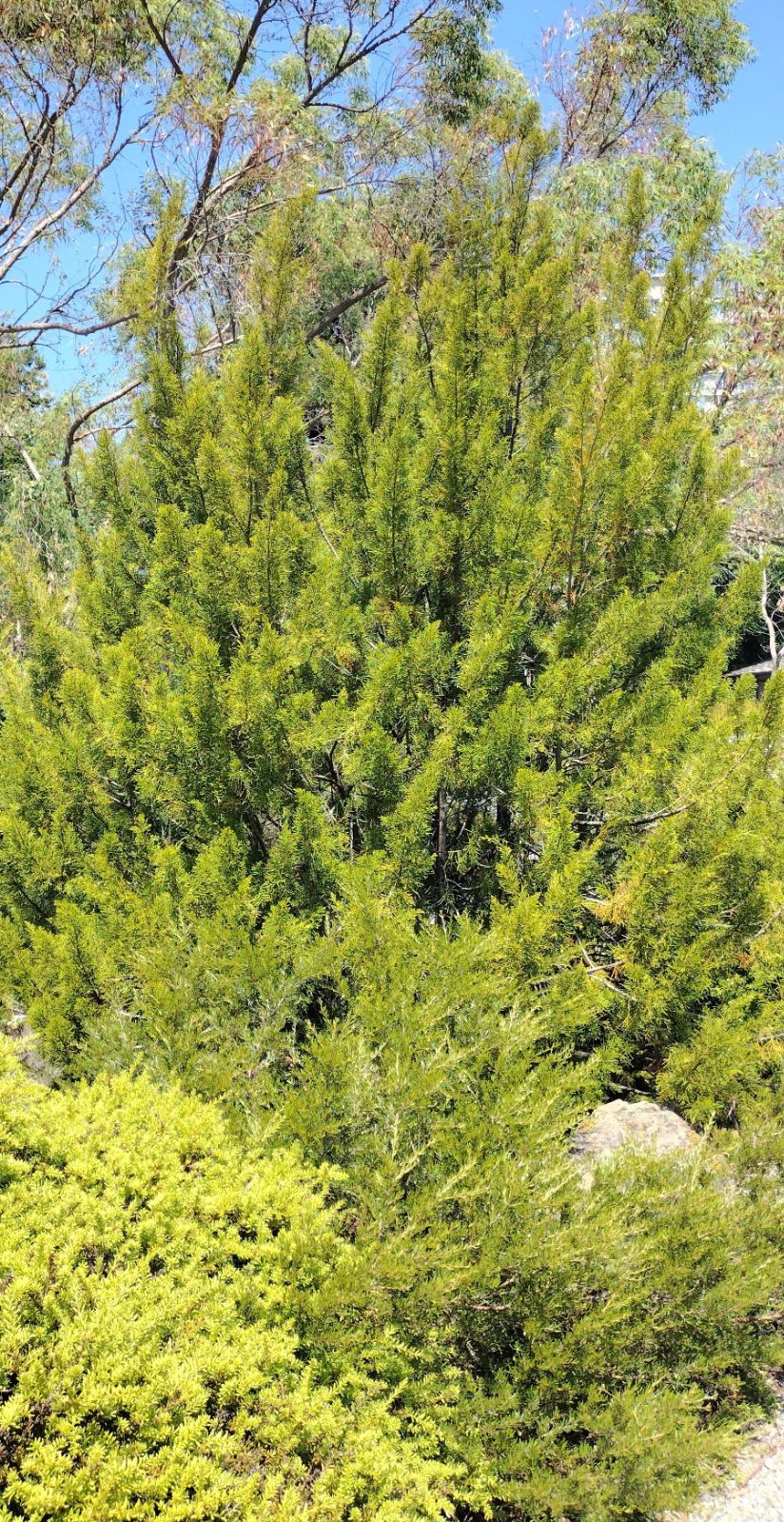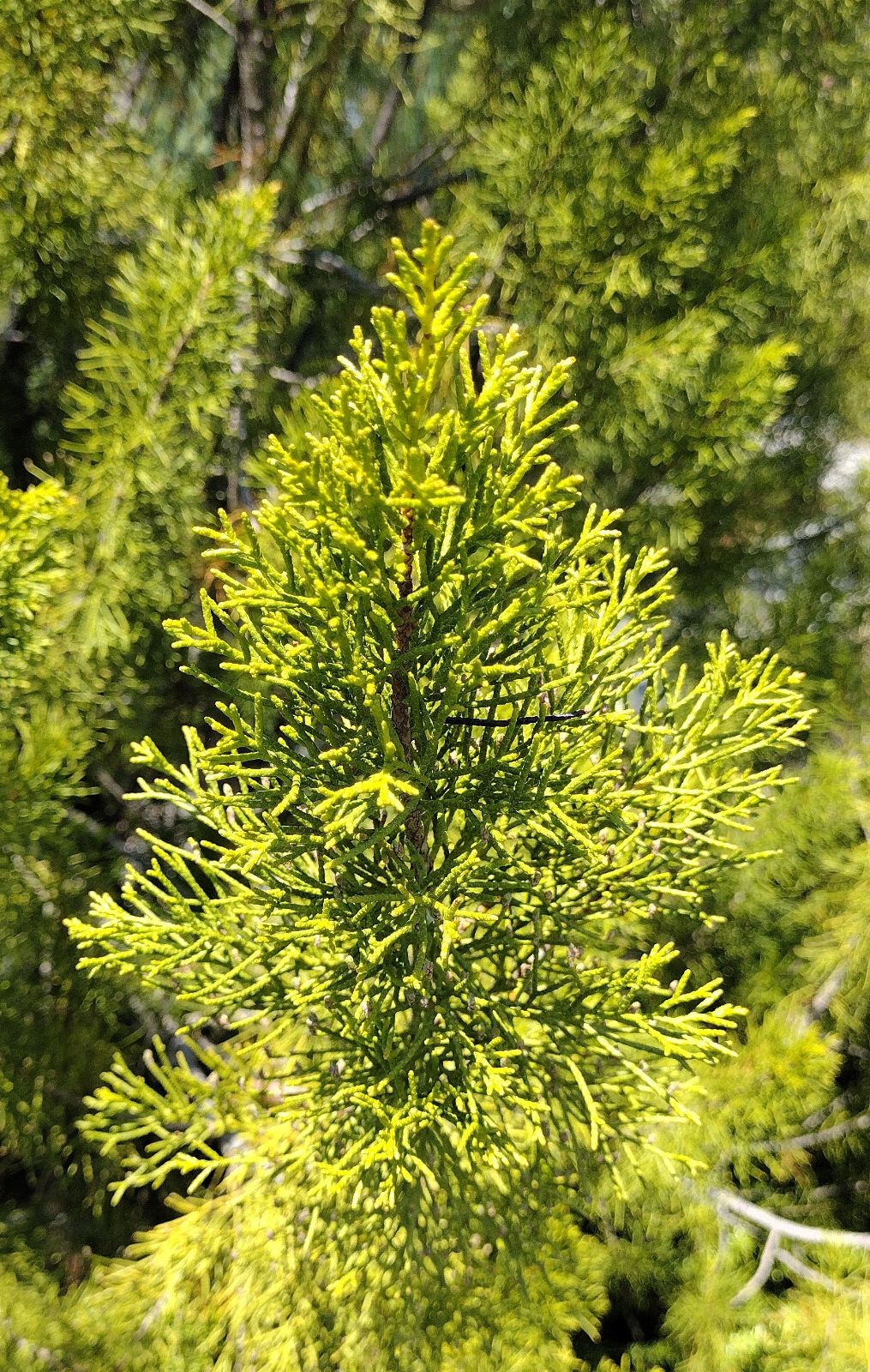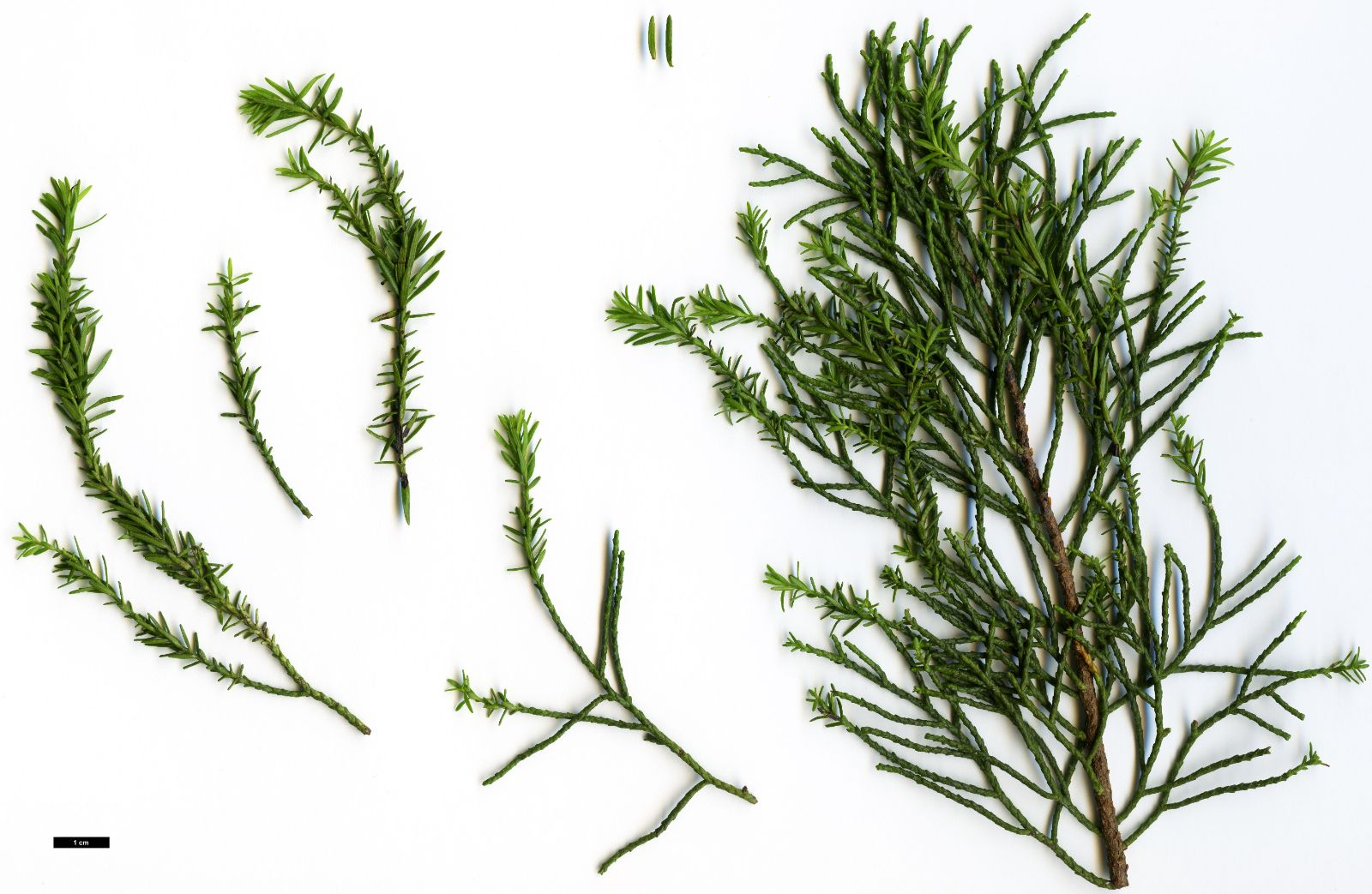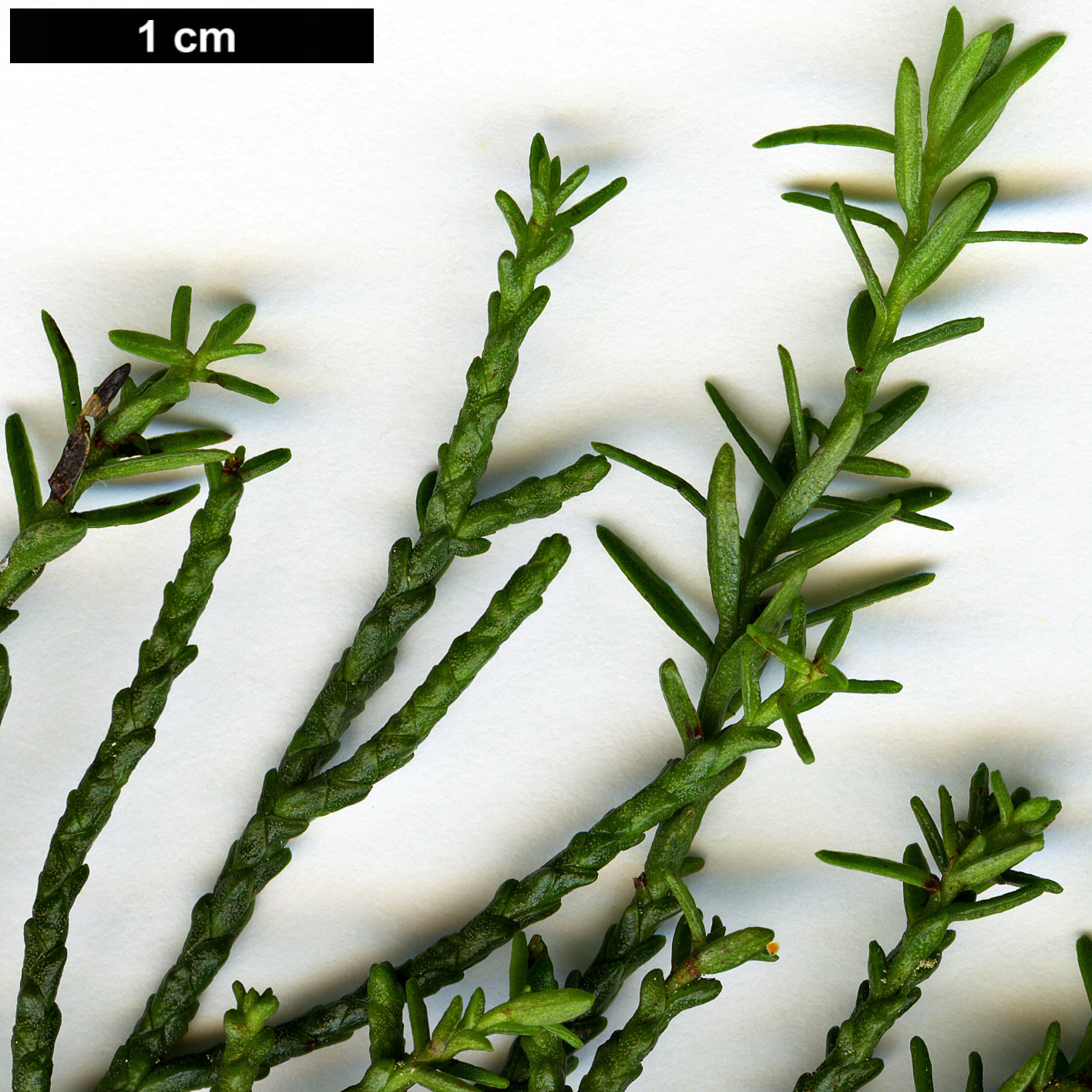Halocarpus bidwillii
Credits
New article for Trees and Shrubs Online.
Recommended citation
'Halocarpus bidwillii' from the website Trees and Shrubs Online (treesandshrubsonline.
Genus
Synonyms
- Dacrydium bidwillii Hook.f. ex Kirk
Editorial Note
The text below is that of Bean (1981) who discussed this taxon under the name Dacrydium bidwillii. We have created this hybrid article – Bean’s text under the correct modern name, with appropriate synonymy – whilst we await sponsorship to enable a full revision of this genus to be written. We are re-organising the Podocarpaceae text in this way to enable a new revision of Podocarpus to commence in early 2022.
TC, February 2022.
An evergreen shrub up to 10 ft high, closely branched; sometimes erect and pyramidal, sometimes prostrate with the lower branches taking root. Leaves of two kinds: those of young plants and of the lower branches of older ones flat, linear, abruptly pointed, 1⁄4 to 1⁄3 in. long; on mature plants they become small, scale-like, closely pressed to the stem like those of a cypress, triangular, blunt and thick, but only 1⁄24 to 1⁄12 in. long. Male flowers solitary, stalkless, 1⁄10 to 1⁄8 in. long, terminal. Female flowers close to the tips of the branches ultimately developing one or two small compressed nuts about 1⁄12 in. long set in a fleshy white cup.
Native of the mountainous districts of the North Island of New Zealand; also of the South Island at from 2,000 to 4,500 ft altitude. This shrub is little known in cultivation but appears to be fairly hardy. There are small examples in the National Pinetum, Bedgebury; and at Wakehurst Place, Sussex.
From the Supplement (Vol. V)
See generic introduction above. As mentioned in the description, the seed in this species is seated in a fleshy collar, usually termed an aril, which is whitish in colour (orange or yellow in its two allies [H]. kirkii and [H]. biforme). The generic name Halocarpus (from Greek ‘halōs’, a disc or halo) refers to this characteristic.




